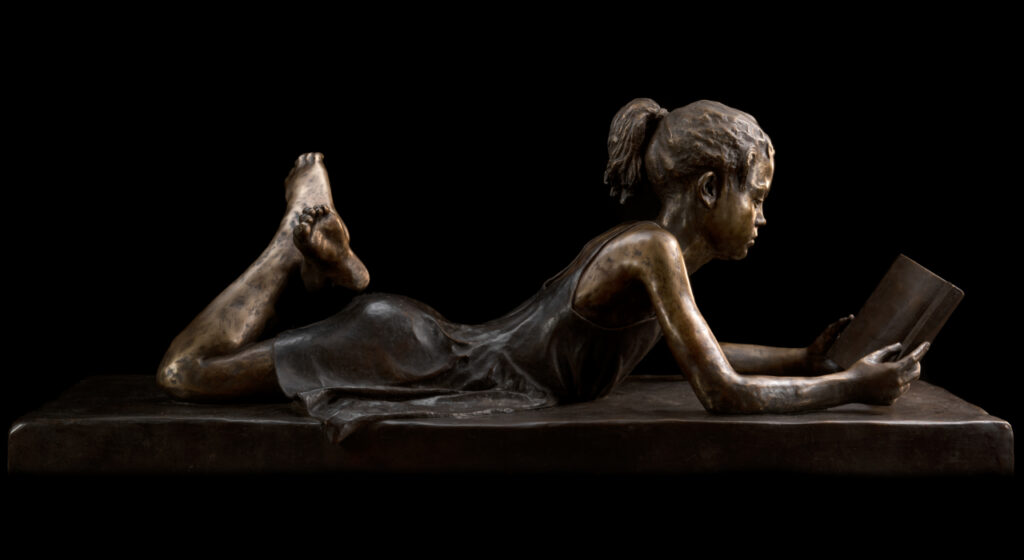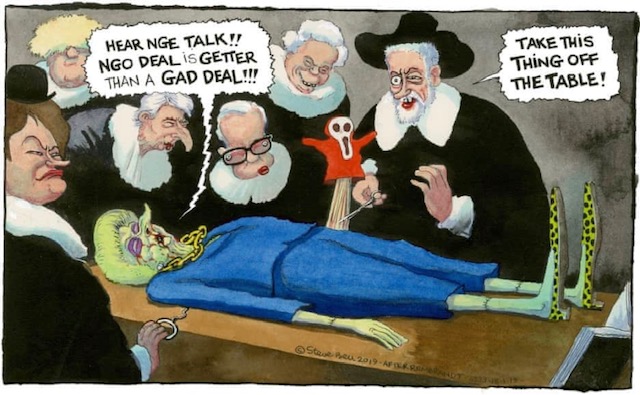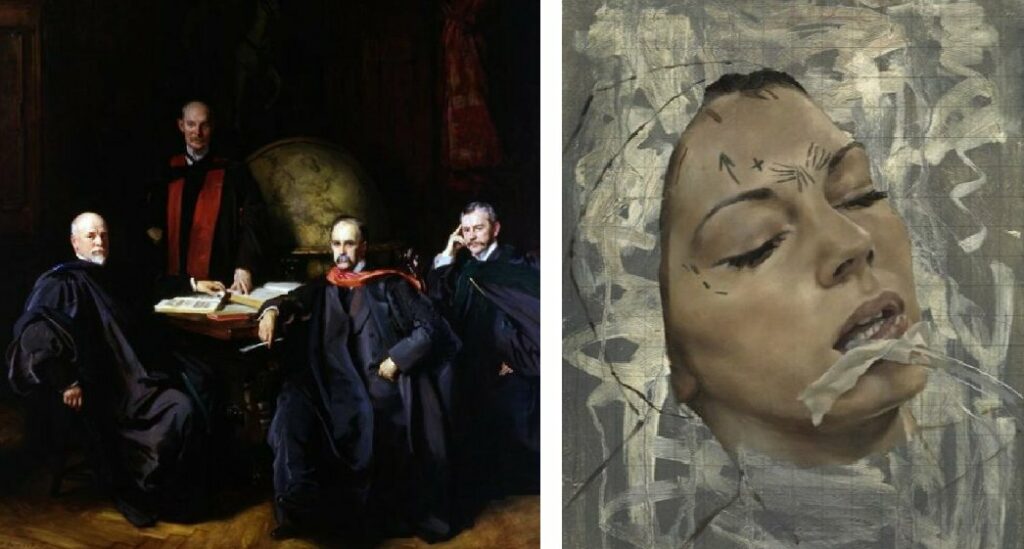With a billing as both a sculptor and a consultant surgeon specialising in head and neck cancer and reconstructive surgery, Nick Grew’s talk to us was eagerly awaited. We were informed that one and a half hours would be allocated to it, with a coffee break in the middle.
Nick, who is Cancer and Clinical Lead and Maxillofacial and Head and Neck surgeon at The Royal Wolverhampton NHS Trust and the Dudley Group of Hospitals NHS Foundation Trust, started his talk by referring to the fact that he had practised as a surgeon since 1994 and was doubly qualified as noted above. It soon emerged that he had been very interested in art and sculpture from the age of 14 and whilst at school had even produced a caricature drawing of the headmaster!
Nick has recently been appointed an Associate of the Royal Birmingham Society of Artists (ARBSA), and in exhibitions has won several prizes and commendations including the Sarasin and Partners National Fine Art Prize. He stated that neck and face anatomy and sculpture are closely related, going on to explain that a surgeon looks at one particular reference point when doing an operation which then logically leads onto the next one and so on, whereas when a sculptor looks at a client’s profile he focuses on many different angles of the bodily part which he is copying.
The talk was peppered with a variety of highly informative and historic slides. The one shown here (left) illustrated the many facets of Nick’s talk. Nick explained in great detail the work involved in his producing a serious early sculpture and indeed one that showed his skills to the full. The eight-year-old old girl (below right) is the daughter of a close friend of Nick’s and he explained how he had systematically built his sculpture concentrating separately on each part of her body. His first sculpture of her excluded her dress thereby helping with correct leg shapes. He then produced a second one adding both the dress and her hair.
He also explained how he dismembered a skeleton to get the knobbly bits right, going on to say that one notices if hands are wrong but shouldn’t notice if they’re right.
Nick explained how the development of the knowledge of anatomy went back to Greek and Roman times and that people could be killed just to develop an understanding of their body parts. This knowledge moved further east with the development and then the fall of the Roman Empire. One or two of da Vinci’s drawings were produced but it was time for a little humour and this took the form of Maggie Thatcher lying on a surgeon’s table (below) with various well-known politicians poring over her prostate body with the subtitle, After The Anatomy Lesson of Dr Nicholaes Tulp (1632) Rembrandt Van Rijn (Steve Bell 2019).
The versatility of Nick’s talk was illustrated best by the following two pictures, The Four Doctors (1907) in The Johns Hopkins University in Baltimore, and Lower Lip Blepharoplasty II (Jonathan Yeo 2012).
We had been privileged to hear a master of two very diverse yet interrelated subjects dissecting them in a highly professional manner with a true lightness of touch.




